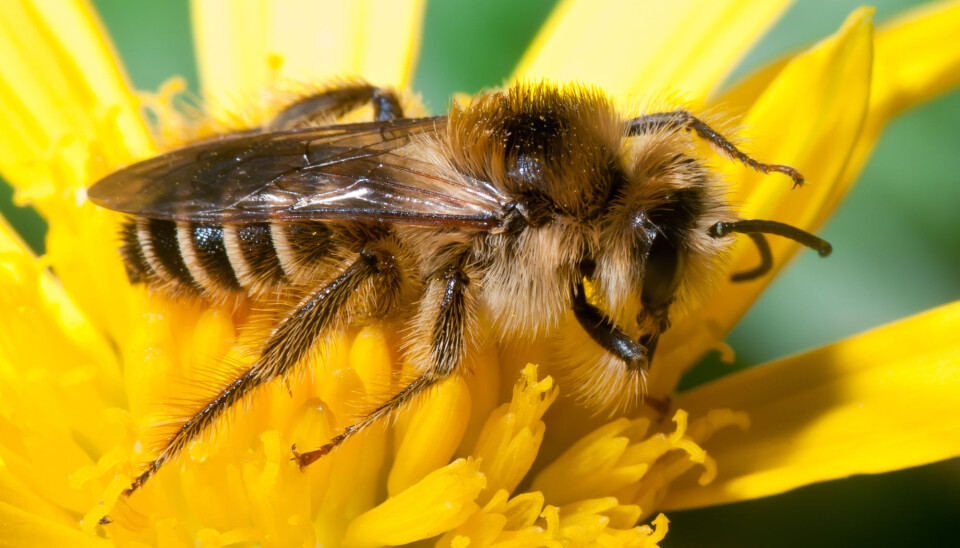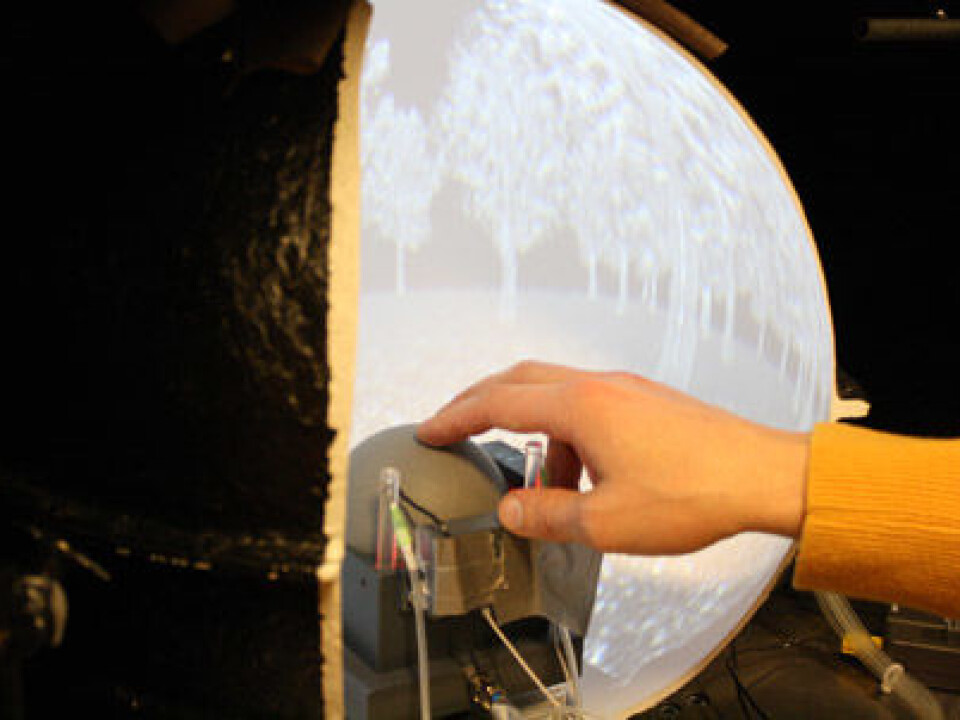An article from The Academy of Finland

What’s it like to be a bee?
Information obtained from the tiny brain of a fly, cockroach or bee can be applied to studying the far more complex information processing mechanisms found in humans.
There is an old Finnish elephant joke where other cultures and peoples of the world wonder how they could make money out of the animal, while the Finn is preoccupied with what the animal thinks of him. This kind of I-wonder-what-it-thinks-about-me work is now being undertaken by Finnish scientists studying exceptionally small heads.
Scientists are particularly interested in how the nervous system interlinks information supplied by the different senses, and how memory mechanisms operate at cell level.
“The smaller the brain, the easier it is to understand cell-level processes that can be highly complex,” says Mikko Vähäsöyrinki, an academy research fellow at the University of Oulu, describing his ongoing project. “The bee’s brain measures no more than around one cubic millimetre, and it has one million brain cells at its disposal, a fraction of what we humans have.”
Studies of networks composed of dozens of cells can help shed light on information transmission, which is extremely difficult to follow in a more complex brain.

The findings arising from the research are generally applicable to information transmission in nerve tissue, and they will also help us understand the function of the human brain.
“If we want to study processes at cellular level, we need to look at the animal that best fits our purposes. What we’re doing now is pure basic research; the time for applied work will come later,” says Vähäsöyrinki.
Living insects have the run of the lab
His research team is studying living insects and they want to keep them alive both during and after their studies:
“We knock out insects using carbon dioxide or cold temperatures,” he explains. “They’re then fixed to a platform surface using sticky wax; we open up the brain casing and start stimulating nerve cells with sensory stimuli such as light flashes, and proceed to measure cell function using electrodes. The results show up on our computer displays in real time.”
The smaller the brain, the easier it is to understand cell-level processes that can be highly complex
During the interview, a bumblebee is running on a ball, and the insect’s electrical brain waves are appearing on the screen. So when will we be able to translate these signals into words and read what this tiny insect is thinking?
“Perhaps that’s not as distant a thought as one might imagine,” Vähäsöyrinki explains. “In fact, the first human experiments on this subject have already been reported in high-ranking scientific publications.”
Good versus bad
Throughout time, human stories have depicted honey bees and bumblebees as happy, sympathetic, helpful little creatures, while cockroaches and flies come across as rather mean and asocial. It looks like we will soon learn how truthful and accurate these preconceptions have been.
But how, then, do these insects withstand being examined without breaking?
“Cockroaches are made of hardier stuff. Bees, on the other hand, are extremely sensitive to surgical procedures. You have to treat insects well: a living insect has a story to tell, a dead or injured insect is of no use to anyone. That’s why we want to treat our bugs responsibly,” explains Vähäsöyrinki.
Virtual insect world
If we want to study processes at cellular level, we need to look at the animal that best fits our purposes. What we’re doing now is pure basic research; the time for applied work will come later
The equipment developed in Oulu has been used to build a virtual insect world. The next step will involve building equipment to test insects’ colour vision. Human hands do not have the precision that these experiments require, and so a micromanipulator was developed to hold the electrode steady or to move it around in a microscopically small area.
Honey bees and bumblebees have strong learning capacity
Bumblebees and honey bees have similar brains and learning capacity, but bumblebees are easier to maintain in laboratory conditions than honey bees.
“Honey bees are quick to learn. You can teach them certain things, they’re social and they have their own language. A honey bee can learn by reward to identify different human faces.”
There are lots of different versions about bumblebees’ colour vision. “We still don’t know how it works, how different colour sensor cells combine information in the bumblebee’s head. What we do know is that you can teach a bumblebee to fly only to meadows with flowers of a certain colour and to switch from, say, blue to yellow by manipulating the reward, i.e. the amount of nectar.”
Research ethics
It is easier to conduct experiments on insects than mammals because, as yet, legislation on animal experiments contains no provisions specifically concerning insects. Activists are not interested in insects, and experiments on insects are not highlighted by the authorities in the same way as other animal experiments. This is not to say that questions of research ethics are simply brushed aside.
“It’s important for every scientist to show respect for life,” says Vähäsöyrinki. “You don’t do experiments just for fun, but to gain important and necessary information. A lot of animal experiments are done around the world that could just as well be done on insects. On the other hand, we’re now seeing some movement in the US to draft ethical rules and good practices for experiments with insects as well.”





